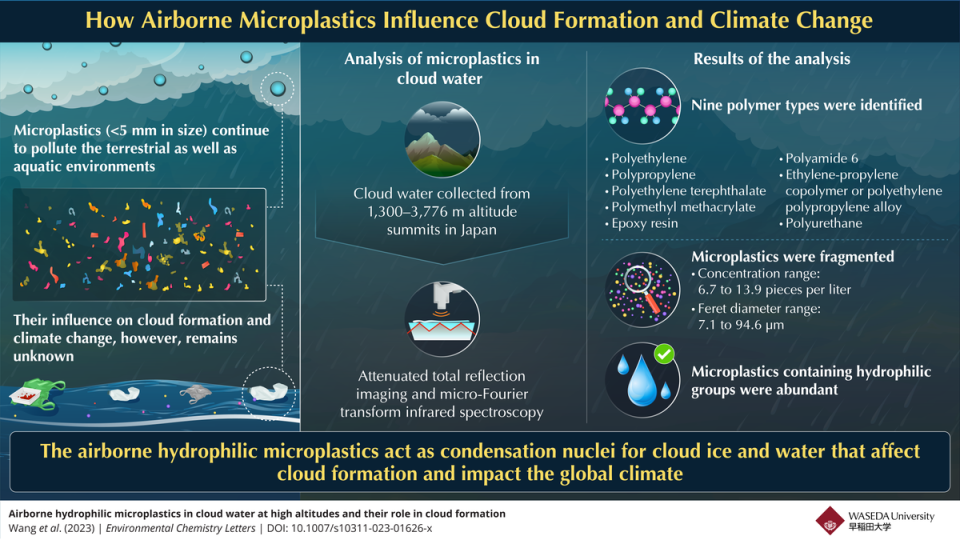Tiny plastic particles have reached clouds, contaminating ‘everything we eat’ via rain, study warns

Tiny bits of plastic have now become an “essential component” of clouds and may be contaminating “nearly everything we eat and drink” via “plastic rainfall”, according to a new study.
These tiny plastic bits – known to pose a threat to human health – are called microparticles and are usually less than 5mm in length. They mostly form after larger plastic products break down over time and are found in industrial effluents.
Previous research has linked these particles to a number of health risks to humans since their chemical constituents – such as bisphenols and phthalates – can disrupt hormones and are also linked to cancer, infertility and early puberty.
Millions of tons of microplastic that end up in the ocean are finding their way into the atmosphere with the ocean spray, revealed a new study, published in the journal Environmental Chemical Letters.
Scientists, including those from Waseda University in Japan, assessed for the first time how these plastic bits affect cloud formation and their potential impact on the climate crisis and human health as “airborne particles”.
“To the best of our knowledge, this study is the first to detect airborne microplastics in cloud water in both the free troposphere and atmospheric boundary layer,” researchers wrote in the study.

“If the issue of ‘plastic air pollution’ is not addressed proactively, climate change and ecological risks may become a reality, causing irreversible and serious environmental damage in the future,” co-author Hiroshi Okochi said.
In the study, researchers analysed cloud water collected from the summit of Mount Fuji, the southeastern foothills of Mt Fuji (Tarobo), as well as from the summit of Mt Oyama.
Each of these regions are at altitudes ranging between 1,300-3,776m.
Scientists used advanced imaging techniques to determine the presence of airborne microplastics (AMP) in the cloud water and examined their physical and chemical properties.
They found nine different types of polymers and one type of rubber in these airborne particles.
The polymer polypropylene that was detected in the samples was found to be degraded and had carbonyl and/or hydroxyl groups.
Researchers also found an abundance of hydrophilic, or water loving polymers in the cloud water.
The latest finding suggests these molecules were removed as “condensation nuclei”, suggesting these airborne plastic particles could play a “key role” in rapid cloud formation and potentially affect the overall climate.
“Backward trajectory analysis at the summit of Mt Fuji in the free troposphere suggested that airborne microplastics in cloud water were originated primarily from the ocean,” researchers said.
“This implies that microplastics may have become an essential component of clouds, contaminating nearly everything we eat and drink via ‘plastic rainfall’,” scientists explained.
They warned that the accumulation of AMPs in the atmosphere – especially in the polar regions – can also significantly alter the ecological balance of the planet and lead to “severe loss of biodiversity”.
“AMPs are degraded much faster in the upper atmosphere than on the ground due to strong ultraviolet radiation, and this degradation releases greenhouse gases and contributes to global warming,” Dr Okochi said.
“As a result, the findings of this study can be used to account for the effects of AMPs in future global warming projections,” he said.

